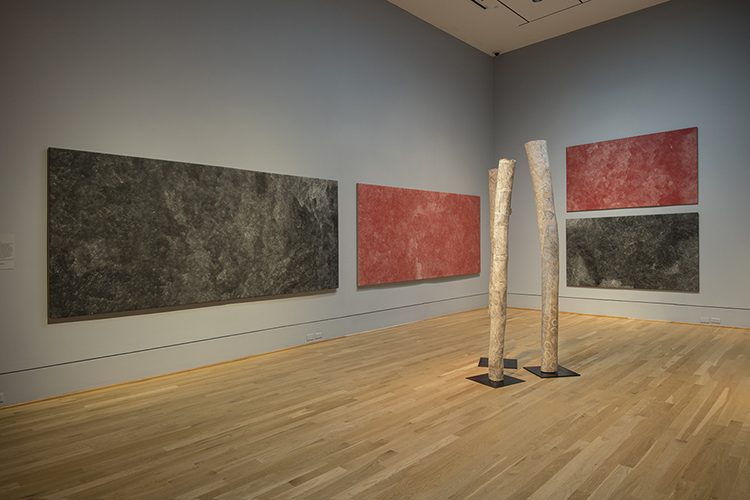In this series, we introduce the nine artists behind Marking the Infinite: Contemporary Women Artists from Aboriginal Australia, on view at The Phillips Collection June 2–September 9, 2018.
ANGELINA PWERLE
Born c. 1946, Utopia, Northern Territory
Lives and works in Utopia, Northern Territory
(Anmatyerr/Australian)
Angelina Pwerle lives at Camel Camp, a small outstation in the Utopia region of Australia’s eastern desert. Outstations are remote communities of one or two small buildings that arose in the 1970s as Aboriginal people began leaving government settlements and missions to establish communities on traditional lands. Like many of her peers, her artistic career began with the establishment of the Utopia Women’s Batik Group in 1977. A decade later, she participated in the landmark exhibition A Summer Project, which brought the art of Utopia to national attention. Pwerle’s work is in many significant public and private collections, including the National Gallery of Australia, Canberra; the National Gallery of Victoria, Melbourne; the Art Gallery of South Australia, Adelaide; and the National Museum of Art, Osaka, Japan.




